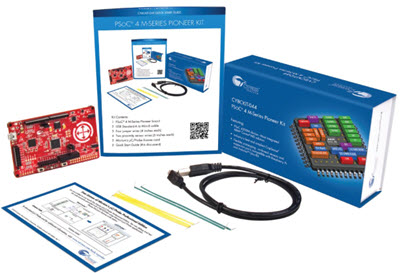|
For novel ideas about building embedded systems (both hardware and firmware), join the 35,000 engineers who subscribe to The Embedded Muse, a free biweekly newsletter. The Muse has no hype and no vendor PR. Click here to subscribe.
|
Published 9/19/2002
Applied Microsystems (AMC) is getting out of the embedded systems tool business (http://embedded.com/story/OEG20020910S0052).
The company was one of the first to provide third-party In-Circuit Emulators. They were one of the best, and for many years one of the most dominant forces in the embedded tool biz. But the market has changed, demand for their products slowed, and their stock price has collapsed, declining to 20 cents per share from the $5 to over $20 they commanded in the 90s.
I remember seeing AMC’s products at shows in the early 80s. Their first ICEs were small boxes with hex keyboards that offered little connection to a host computer… this is before the PC, before universal desktop machines. The 4 MHz speeds and minimal complexity of the 8 bit embedded processors of the time demanded little of the tools. As I recall these units sold for about $3k.
Times changed. Embedded systems grew up, many moving from slow 8 bitters to high performance 16 and 32 bit processors. C replaced assembly. Prefetchers, pipelines, cache, and other performance-enhancers stretched the capabilities of tools. Applied rode the wave, successfully adapting their product line to the changing realities of the market.
When I started my ICE business in the 80s I foolishly believed that keeping prices low would lead to success. Wrong. I learned that customer support is the most expensive of all components in an ICE. A $600 device or a $6000 unit had about the same support needs, so how can one afford to sell cheap? Applied, too, ratcheted their sell prices up, by the early 90s pushing units in the $20k+ range.
That’s a buncha bucks for a debugger. It’s a hard sell to the boss. “You want 20 grand for a device to find your mistakes? Just don’t make any!” Though my sympathies are entirely with Applied, customers complained and protested, but had few alternatives.
Then Motorola invented the BDM, putting most of the logic needed for a debugger on-chip. Now many embedded processors include these circuits. For the cost of a few ICs and a software debugger the developer gets a pretty nice development environment. It’s not as sophisticated as one finds in an ICE, but BDMs offer an almost unbeatable value. Support is much cheaper since BDMs use a very simple connection to the target system, one that doesn’t need 100 perfect high-speed signal paths.
Applied responded with new mixes of products. But even sales of thousands of BDM tools could never make up the company’s $40 million yearly volume. Scaling down ICE technology to lower-cost units like their CodeTap and SuperTap helped, but not enough. Their very cool CodeTEST, sort of a debugging adjunct that trapped memory leaks, collected deep traces, and measured code coverage just did not catch on as it could or should have. I figured that the code coverage requirements in DO-178B insured success of that tool, but customers were scarce. Betcha the tool was ahead of its time, that an increasing awareness of safety-critical issues will spawn more, not fewer, needs for this sort of product.
Today AMC’s sales have crashed to half last year’s levels and the company is furiously bleeding money. Subject to regulatory and stockholder approval, AMC will sell their tools off to Metrowerks, a long-time player in the software end of the embedded world. Metrowerks is getting a great dealing, acquiring Applied’s 20 years of R&D for under $4m.
The remnants of Applied will leave the embedded space and hopefully thrive in the easier (?) world of the Internet servers.
I wish both companies well, and sure hope Metrowerks finds a way to profitably provide AMC’s and other tools to the embedded community. We need all of the debugging help we can get! I suspect, though, that AMC’s troubles stem from fundamental changes in this market. More developers than ever are very removed from the hardware. More organizations segregate low-level hardware/software whizzes from applications people. Most of the latter have no need for expensive but powerful debuggers. A BDM provides all of the power needed for app-level troubleshooting.
Are all of the tool companies in trouble? Green Hills (www.ghs.com) sure seems an exception, recording strong growth and profits. They advertise constantly. But looking through this month’s ESP I see no ads from Applied. None from Metrowerks. Avocet (who bought Huntsville, Softaid, Cactus, and 2500AD): nada. Nor any from Wind River (who bought, well, everyone). Red Hat appears to be backing a bit away from eCos… and they’re not in ESP either.
SEC filings from both Wind River and Applied both blame the collapse of telecom on their travails. Surely there’s a lot more to this industry than cell phones and the Internet!
What do you think? Is the era of hardware debuggers dead?


